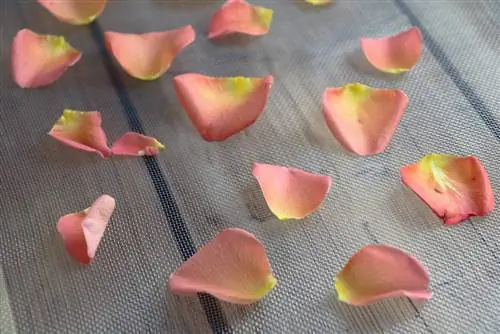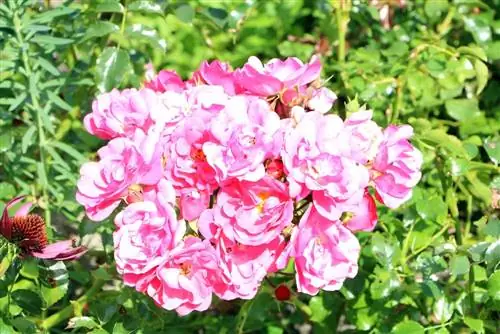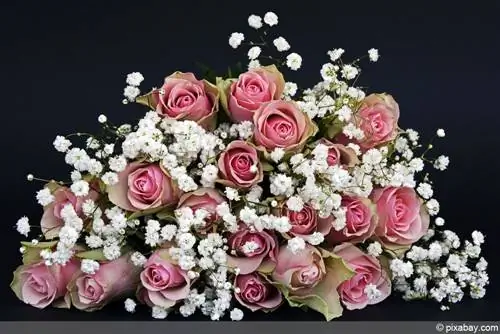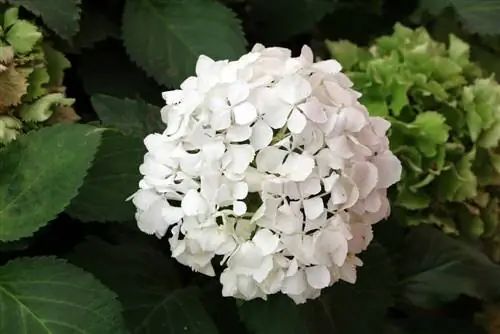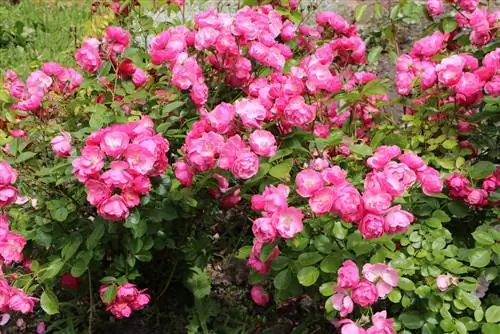- Author admin [email protected].
- Public 2023-12-17 03:39.
- Last modified 2025-01-24 12:45.
A fresh rose petal is a special gift. It impresses with its elegant shape and bright, clear color. As an added bonus there is an intoxicating scent. Unfortunately, it also has a disadvantage: it wilts away far too quickly before our eyes. But sometimes we want to keep them forever. Drying prolongs their existence, albeit in a different way.
Which varieties are suitable?
Edelweiss flowers are ideal for drying. This also applies to roses, regardless of whether only rose petals or entire bouquets of flowers are to be dried. All varieties from the huge rose family are suitable for this type of preservation. However, the flowers used should be fresh, intensely colored and, if possible, fragrant.
Harvesting roses
Flower shops sell various types of roses all year round. If you have rose bushes in your garden, you can use them to your heart's content. However, there are time limits here. In our latitudes, the flowering period of this royal plant is limited to a few months a year due to the prevailing climate.
- Flowering time varies depending on the rose variety
- first flowers appear in May
- Flowering season ends in late autumn
Bloomed roses in the garden are an ornament that should be preserved for as long as possible. Nevertheless, the time for the harvest must not be missed.
- Harvesting roses before they wilt
- do not use falling leaves
- Petals should still be attached to the plant
- do not pluck budding roses apart
Tip:
A flower that has been in the blooming phase for about three days is ideal for drying.
Process cut flowers faster
Roses in bouquets wilt faster than rose petals that are still on the plant. That's why fresh roses should be admired in the vase for a maximum of two days, then it's time for the drying process. Most of the flowers are still somewhat closed at the beginning. Once they open, they need to be dried. Depending on your preference, with a stem, individual flower heads or just the leaves.
Harvesting edelweiss
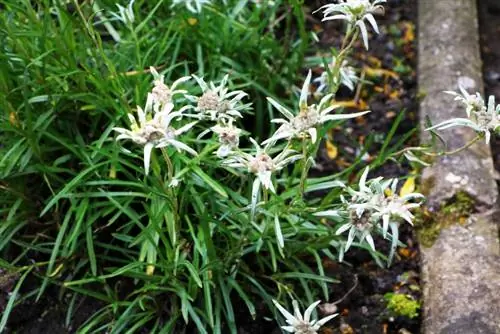
Edelweiss has found a permanent home in mountainous areas. If you come across it while hiking, feel free to admire it and take photos. However, don't pick! Because the edelweiss is protected. We can only provide us with flowers for drying that are cultivated in our own garden or purchased from a garden center.
- You have to avoid bright white flowers
- cultivated varieties have a slightly grayish color
- The abundance of flowers in the garden is also more modest
- the flowers developed in July
- it can be harvested
Various drying methods
Whether it's rose or edelweiss, it plays a minor role in the drying process itself. Depending on how many flowers are dried and what the desired result should look like, there are several options available:
- Air drying
- Pressing between book pages
- Drying with drying s alt, detergent or silica gel
- Oven drying
- Drying in the microwave
Air drying
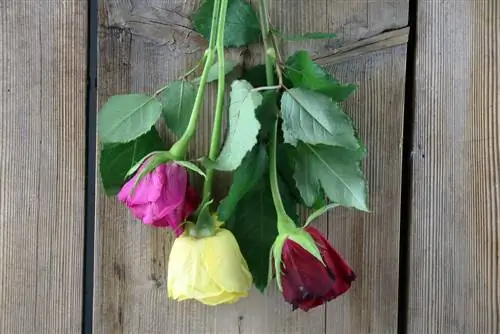
Air drying is a simple way to remove moisture from fresh roses and edelweiss without significantly changing their shape. The individual steps are described in more detail below:
- Distribute edelweiss, whole rose heads or rose petals on absorbent kitchen paper or on a grid. The flowers or leaves should not touch or even overlap.
- Put the whole thing in a place that provides plenty of warmth to dry. A boiler room is ideal.
- If you use kitchen paper as a base, replace it about every three days. Or change the position of the flowers to areas that are still absorbent.
- Turn flowers and leaves regularly so that they can dry evenly on both sides.
- Shake out dried flowers gently. Sometimes there are little creepy crawlies hidden in there that fall out when you shake them and run away.
Tip:
If the leaves still feel soft, there is still residual moisture in them. Let these leaves dry a little longer, otherwise mold may form.
Pressing between book pages
Pressing individual flowers has a long tradition. A flower is placed between the book pages and the book is closed. The flower gradually loses moisture, but also its natural shape. To ensure that pressing is even more successful, the following instructions should be observed.
- Do not place the flower directly on the book pages
- cover with blotting paper or kitchen paper
- the moisture is absorbed better this way
- the leaf sides do not get dirty
- the flower must be well positioned
- Leaves must not be on top of each other
- change the damp kitchen paper every now and then
Flowers and leaves dried in this way are completely flat. They are well suited to decorate letters and pictures.
Note:
This method is not suitable for large rose heads. Plucked rose petals can be dried well in the book. Edelweiss flowers are also suitable for this pressing variant due to their shape.
Dry s alt, detergent and silica gel
Dry s alt, dry detergent and silica gel have the common property of absorbing moisture. These remedies also offer some advantages:
- Drying is faster
- the original flower shape is retained
- cause better durability
- Dry s alt and silica gel can be used multiple times
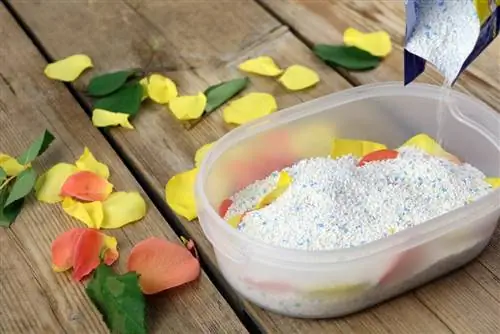
How to dry your roses or edelweiss flowers using one of these products:
- Choose a sufficiently large and screwable glass.
- Cover the floor with dry s alt, dry detergent or silica gel.
- Place the flowers on top.
- Fill the jar with dry s alt etc. If you dry several flowers at the same time, make sure that they do not touch each other.
- Close the jar and leave it like that for about four days.
- Dry s alt absorbs the color of the rose. When the s alt and the flower have adjusted in tone, the drying process is complete. With the edelweiss, the effect is not as visible due to the simple grayish color.
Tip:
Detergent is cheap and available in every household. It is the ideal remedy for individual flowers. Silica gel, on the other hand, is more expensive but can also be used several times. If you repeatedly dry flowers, silica gel is recommended.
Drying in the oven
Drying rose petals in the oven is quick and inexpensive. And this is how it works:
- Put a layer of sand on the baking tray.
- Distribute the flowers or leaves on top. There should be enough space between them.
- Heat the oven to 40 degrees Celsius.
- Put the baking tray with the flowers in the oven for about 30 minutes.
- Check whether the flowers are completely dry. If not, extend your time in the oven by a few minutes.
Gentle drying in the oven is not only easy to use, the result is also impressive. The dried petals have a decorative curve and still smell almost like they were freshly picked.
Drying in the microwave
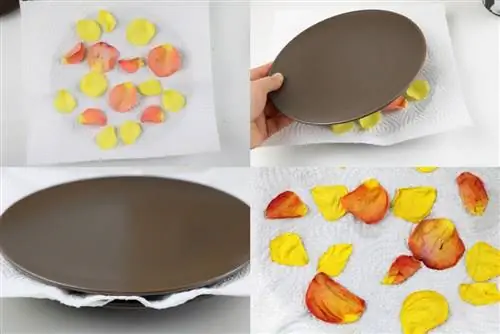
You can achieve the fastest drying with a microwave. Since almost no household now lacks it, there are hardly any costs associated with this type of drying. This is what you need:
- fresh roses or edelweiss flowers
- a microwave
- absorbent kitchen paper
- two microwaveable plates
And this is how drying in the microwave works:
- Cover a plate with paper towels.
- Distribute the flowers on top, leaving enough space between them.
- Place another layer of kitchen paper on top of the flowers.
- Cover the whole thing with the second plate.
- Turn on the microwave. If the wattage is high, around 40 seconds is enough. With a lower wattage, the microwave needs approx. 90 seconds.
- Take out the dried flowers.
Drying entire bouquets

Beautiful rose bouquets can be dried whole. The roses should be fresh and the flowers only slightly open.
- Cut all stems diagonally with a sharp knife.
- Place the bouquet in a vase with a mixture of equal parts water and glycerin.
- Take the rose bouquet out of the vase after two days.
- Divide large bouquets into several small bundles so that they dry well and evenly.
- Hang the bouquet in an airy, cool and dry place. No direct sunlight.
- Depending on the type of rose and the size of the flowers, the bouquet will remain in the hanging position for about 4 - 6 days.
- Then you can place the bouquet in a vase without water. They will continue to dry in there for about three weeks.
Tip:
You can get glycerin in any pharmacy without a prescription.
Durability
Dry roses have a long shelf life, but an extension of time is welcome. Spray the dried flowers evenly with hairspray or hairspray. The annoying spray smell quickly disappears and the natural rose scent emerges again. Glossy varnish passes on its shine to the flowers. Repeat this procedure every few months. This will preserve the beauty of the dry roses or edelweiss flowers for many years.

